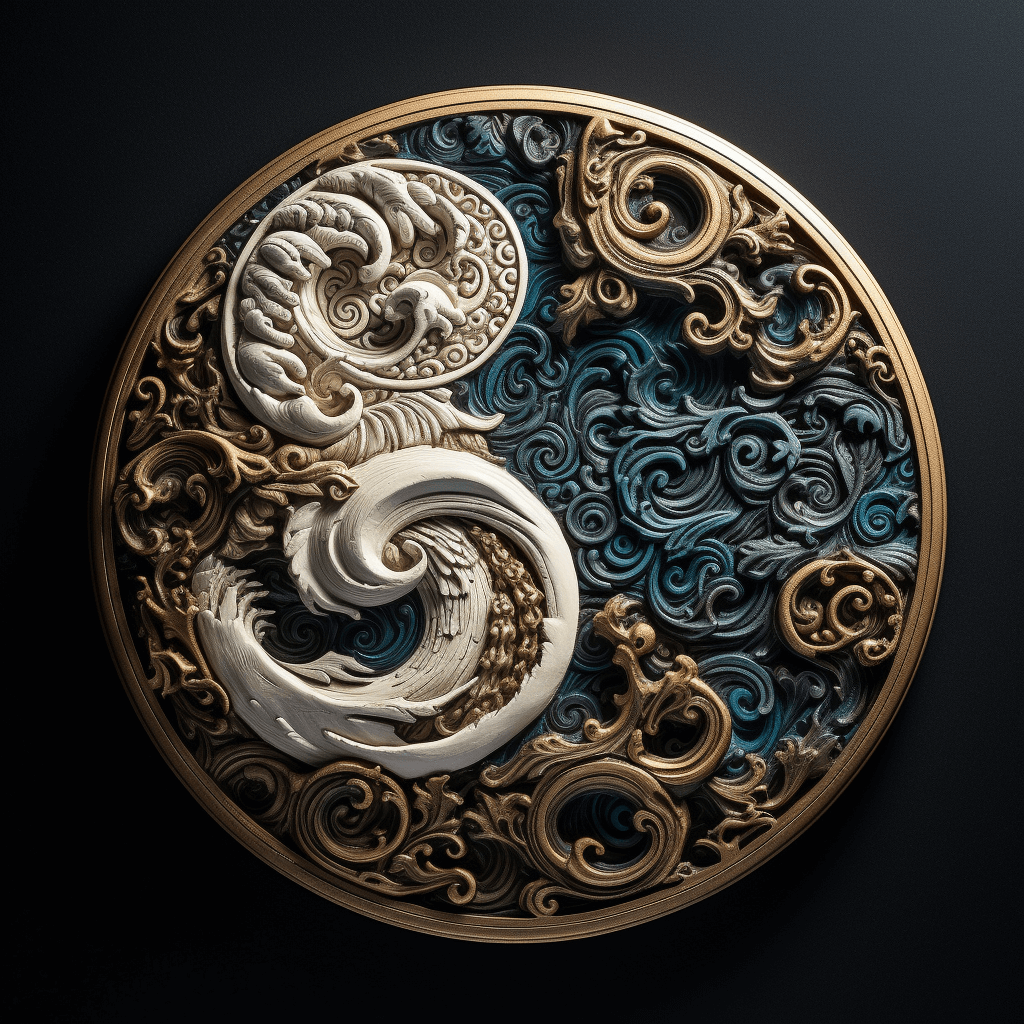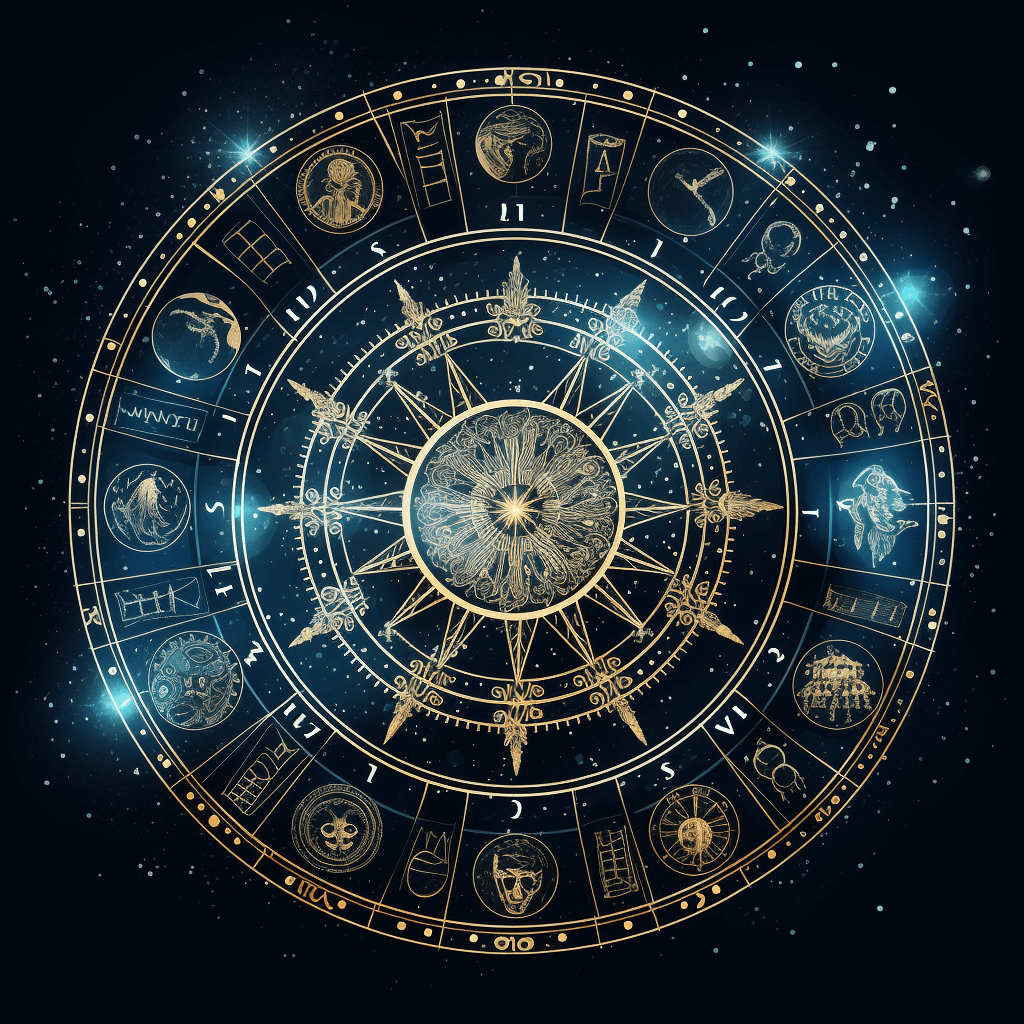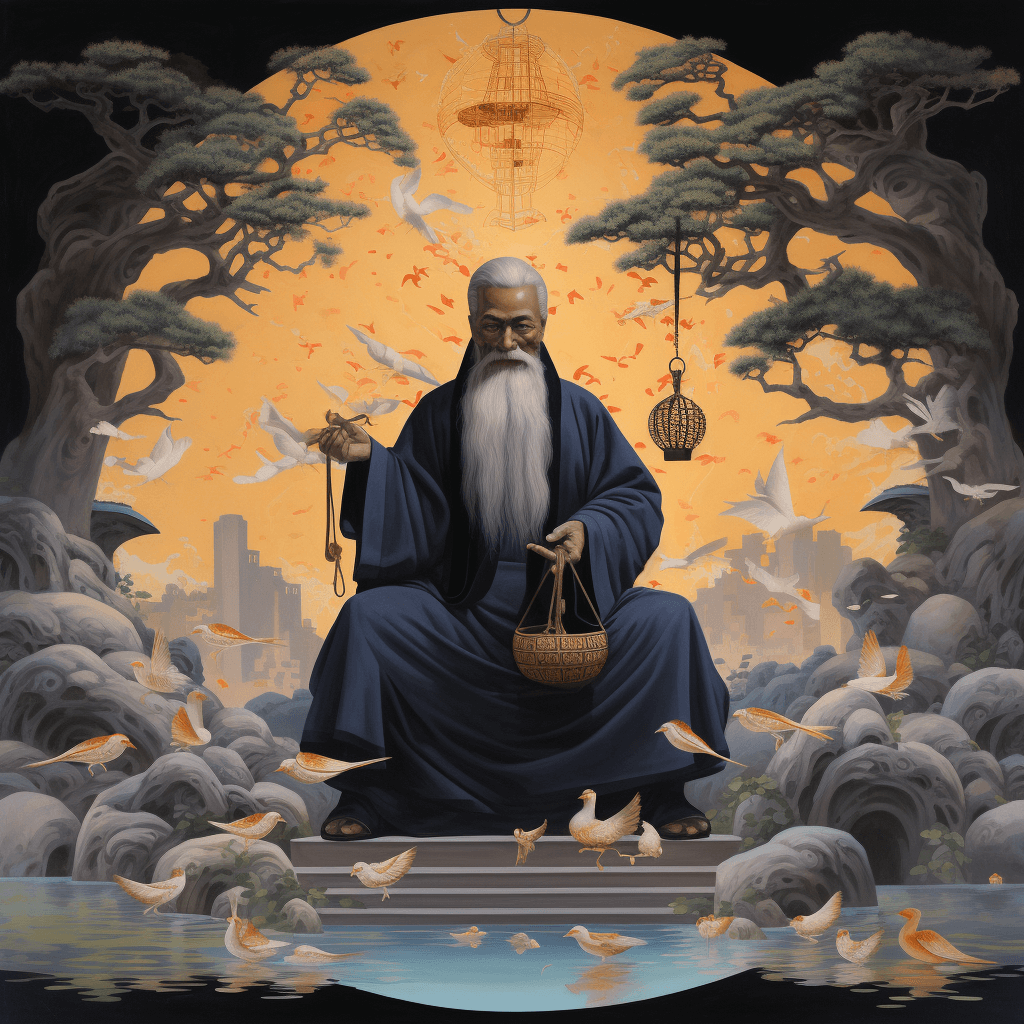Yin Yang represents one of the ancient Chinese beliefs that showcase the idea of dualism, like the religious dance of opposite yet complementary forces in the universe. With its roots deeply derived from the diverse aspects of Eastern cultures, it has flexibly played a phenomenal role in lifestyle, spirituality, and medicine among many others. This article will endeavor to delve deep into the amazing tapestry of the Yin Yang philosophy, its roots and meanings and how this brilliant concept may be applied in daily life.
Getting to Terms with the Concept of Yin and Yang
The Yin Yang philosophy at its core lays the thought that seemingly opposed and also contradictory powers may, in reality, be interrelated as well as interdependent hence balancing each other out to attain harmony within the natural environment. This duality aspect emphasizes the unity of opposing forces stating that one will never exist without the opposition of the other.
Let’s now take apart features of each component in order to clearly grasp this profound concept:
| Yin | Yang |
|---|---|
| Associated with femininity | Associated with masculinity |
| Represent the moon, night, darkness | Symbolizes sun, day and light |
| Symbolizes passiveness, receptivity and introspection | Symbolizes activity, creativeness and extroversion |
| Has affiliation with earth, cold and water elements | Connected with heavenly, heat and fire elements. |
| Signifies downwards and inside direction | Signifies upwards and outside direction |
However, it is important to note that Yin and Yang are not absolute. Each contains an element of the other as shown in the Yin Yang symbol by having a small black dot contained within the white one and vice versa. This shows how nothing in a universe is entirely Yin or entirely Yang but the continuous shift to be a combination of both.
Yin Yang Origin and History
 The historical concept of Yin Yang takes us back beyond 3000 years to China. The origin is best depicted in the Zhou Dynasty (1046-256 BC) as a period that was rich in culture with exploration of numerous philosophical theories and naturalistic spiritual concepts. The words “Yin” and “Yang” originally meant the shady side and sunny side of a hillock, respectively. These meanings expanded and developed drastically over time to embody more abstract connotations and enveloping enormous metaphysical speculations.
The historical concept of Yin Yang takes us back beyond 3000 years to China. The origin is best depicted in the Zhou Dynasty (1046-256 BC) as a period that was rich in culture with exploration of numerous philosophical theories and naturalistic spiritual concepts. The words “Yin” and “Yang” originally meant the shady side and sunny side of a hillock, respectively. These meanings expanded and developed drastically over time to embody more abstract connotations and enveloping enormous metaphysical speculations.
Most people believe that the Yin Yang philosophy was an outgrowth of the ancient Chinese observation of natural phenomena. For instance, in the day and night cycle, changing seasons, and forces in nature like those that are opposing and yet complementary exemplify the dynamics in Yin Yang.
Yin Yang concepts were assimilated in the teachings of prominent Chinese philosophers, namely Confucius and Lao Tzu, which determined and manifested largely at that in the development of various aspects of Chinese culture. While Confucianism stressed more on the balance of Yin and Yang in the social order, Daoism (Taoism) applied the principle to explain the harmony in the universe and the nature of life.
From astrology, Feng Shui, martial arts, medicine to art today, the Yin Yang theory has permeated many disciplines since earlier studies in history giving rise to one theoretical basis of life and universal interpretation.
A Symbolism of the Yin Yang Icon
The Yin Yang symbol, or the Taijitu, is a thousand years Chinese icon expressing the concept of dualistic philosophy. Its symbolism is so simple but yet so meaningful as it carries wealth of philosophical wisdom.
The Yin Yang symbol consists of two swirling halves, a black (Yin) and a white (Yang), with each half holding a dot of the opposite color. The black half, Yin, in its traditional context is female, dark, feminine, introspective, receptive, and also the moon. On the other hand, the white half, Yang, stands for masculinity, light, activity, assertiveness, and the sun.
And the few small dots within each half means that there is a seed of its opposite within every element. This relates to the shared interdependent relationship between Yin and Yang – the fact that neither one could exist without the other.
The resulting shapes of the Yin and Yang together will give a perfect circle which symbolizes that everything is unified in the universe and changes in a cyclical nature. The swirling pattern shows the continuous flow and interchange between the two forces indicating also the concept of everything is changing balancing.
Simply put, the Yin Yang symbol can be viewed as a representation of interconnection, complementarity, and how opposing dualities are harmoniously balanced within the vastness of the universe.
How to Interpret the Dualities: What Does Yin and Yang Represent?
In the conception of Yin and Yang philosophy, the universe is taken to be a complicated system of interrelated and interdependent forces. The forces symbolized by Yin and Yang, they are not opposites but inevitables. They keep on interacting and upholding equilibrium between each other and thereby the influent equilibrium on each other. The concepts of Yin and Yang can be applied in various aspects of life, so it helps one to better understand the world that surrounds us.
| Yin | Yang |
|---|---|
| Feminine | Masculine |
| Darkness | Light |
| Moon | Sun |
| Passivity | Activity |
| Introspection | Expression |
| Receptivity | Assertiveness |
| Cold | Heat |
| Substance | Form |
Understanding these dualities can act as a compass in perceiving and responding to the challenge and opportunity that life presents. The dynamics of change, starting with the interplay of Yin and Yang, enables us to comprehend that each component of life is transient and forever evolving.
It should also be recognized that Yin and Yang do not represent absolutes. Every element within Yin and Yang carries a seed of its opposite, so under particular conditions things can transform into their opposites, once more emphasizing the complexity of the universal what is fluid.
Yang Astrology Meaning: Effect on Personality and Life Path
 Yin and Yang are two critical concepts in the world of astrology that provide useful insights into personality profiles and life blueprints. In many cases, the Yang energy – being active, expressive, and outward-focused – is able to make huge marks on a person’s astrological chart.
Yin and Yang are two critical concepts in the world of astrology that provide useful insights into personality profiles and life blueprints. In many cases, the Yang energy – being active, expressive, and outward-focused – is able to make huge marks on a person’s astrological chart.
Astrology splits the twelve zodiacal signs in Yin and Yang category, with the yang of fire (Aries, Leo, Sagittarius) and air signs (Gemini, Libra, Aquarius). They are dynamic, extroverted, and proactive – traits usually grouped in a Yang energy.
Yang in astrology denotes action, determination and forward momentum. The personality traits of those with a predominance of Yang in their astrological chart are:
- Assertive: People with the Yang orientation usually have a very forward approach to things and do not hold themselves back while expressing their opinion or taking control of situations.
- Confidence: Self-assurance becomes fortified with the active energy of the Yang providing courage to confront an adversary of all sorts.
- Extroversion: Expression of the energetic Yang is outgoing, which also often expresses the gregariousness and during group activities.
- Innovation: Yang individuals are prone to be ahead of their times as they always seek new ideas, solutions, and innovations.
However, it is very important to bear into mind that a balance of Yin and Yang is imperative. It encourages the individuals with dominant Yang energy to not forget to cultivate their Yin side too by encouraging themselves to be more introspective, receptive, and nurturing for leading a balanced, fulfilling life.
Importance of Balance in Yin Yang
This philosophy of Yin Yang is highly focused on the concept of balance. The opposing forces of Yin and Yang are considered to be complementary, as they act upon each other within a grand whole and a greater system where everything exists in a pattern of constant change and fluctuation.
A key understanding about Yin Yang is that superiority of either one aspect does not exist. However, a balance of the two is necessary for a healthy and a well-balanced life. This is a dynamic balance not an illusory static equilibrium, which can constantly adapt to this persistent changing life circumstances.

An imbalance of Yin Yang may result in disharmony and disharmony. A few examples are the fact that a man with excess Yin can be so passive as well as sluggish whereas a man with excess Yang has been reported to have stress and burnout. On the other end of the other spectrum, balance in both Yin and Yang energy is proved to provide health, vitality, and peacefulness.
Another intriguing concept related to Yin Yang is the Five Phases (Wu Xing). The phases include the Wood, Fire, Earth, Metal, and Water associated with the various elements, colors, seasons as well as the human anatomical structures. The interaction and transformation put into motion by the principles of Yin and Yang results in the evolution of these phases. The Five Phases cycle represents a view to nature as being an ever-changeable process, and that any particular phase within it is temporary.
In practical applications, these may include Feng Shui or Traditional Chinese Medicine, where it is often ‘curative’ in the sense that the goal is to bring about a better balance of Yin and Yang in person’s environment or in the body. It can be done in various ways – the arrangement of a house or office space, dietary changes and by using acupuncture and herbs.
Yin Yang and Its Connection to Taoism
 The concept of Yin Yang, whose roots are entrenched in Taoism, a philosophical and religious tradition which has been an integral part of Chinese culture for more than two thousand years, is part and parcel of the texture of Taoism’s outlook on life, nature, and the universe.
The concept of Yin Yang, whose roots are entrenched in Taoism, a philosophical and religious tradition which has been an integral part of Chinese culture for more than two thousand years, is part and parcel of the texture of Taoism’s outlook on life, nature, and the universe.
In the philosophy of Taoism, Tao (also known as Dao or ‘The Way’) means the universal natural order. It is an ever flowing eternal force throughout all life forms linked with them all together. Yin and Yang are considered as those two primary elements that flow from the Tao that embody opposing yet complementary forces found within all things of the universe.
The Tao Te Ching, one of the oldest piece on Taoism, written by the old Chinese philosopher Lao Tzu himself in a lifetime, all through revolves with a recurring theme i.e. Yin and Yang. It emphasizes this idea to balance every essence of human life keeping accordance with the harmony shown by the Tao.
Another crucial idea in regards to Taoism and concerned with Yin Yang is the concept of ‘Wu Wei,’ which often translates to ‘effortless action’ or ‘non-action.’ It actually means doing things in a way of adjusted harmony with any particular situation, being more aligned with the flow of the Tao and therefore letting nature take its course.
In Taoist practices and ideology such as Qigong, Tai Chi and various meditations, the philosophy of Yin Yang assumes a central place. These practices aim at balancing forces of Yin being negations with Yang, harmonizing with the Tao and cultivating good health, peace as well as spiritual awareness.
Applying Yin Yang in Feng Shui
Feng Shui is an ancient art from China and this is all about harmonization with or influencing a surrounding environment. It heavily uses Yin and Yang. In totality, this practice is for creating harmony and balance within living and work places as the universe is a balanced one for which Yin and Yang stands. All such correspondences are attributed to the various sections of a home or workplace in Feng Shui, including prosperity, health, career, and relationships. The areas are also associated with the different elements like wood, fire, earth, metal, and water along with Yin or Yang characteristics, just as they are associated with the different aspects of life. The intention is to balance these elements and energies so as to create a harmonious positive productive environment.
In terms of Feng Shui, Yin energy stands for restfulness, calmness, and introspection. Most probably, it is associated with soft textures, darker colors, as well as curvy shapes. Bedrooms, meditation spaces, along with other areas that are meant to relax and rejuvenate, will usually be designed focusing on Yin elements.Yang energy, on the other hand, is light and uplifting, stimulating and energizing. It’s best represented in strong colors, straight lines, and dynamic forms. Spaces such as offices, exercise rooms, or any area geared for activity and productivity should display Yang elements.
The essence of Feng Shui is not in the elimination of either Yin or Yang but in striking the right balance. A house with more Yin than Yang might feel lethargic and gloomy, while too much Yang is likely to bring too much light, some restlessness and tension. Feng Shui aims to harness these two energies and balance them accordingly to encourage well-being, prosperity, and happiness.
Yin Yang in Traditional Chinese Medicine
Yin and Yang philosophy is richly embedded in Traditional Chinese Medicine (TCM) where it acts as the building block of the understanding of the body, diagnosing what ails the body, and also in treating any condition. According to TCM, health refers to a representation of Yin-Yang balance in the body since there is harmony of these forces in the universe.
According to TCM, Yin would refer to aspects that represent coolness, dampness, and quietness of the body. This is associated with the moon, the night to rest. Yin body aspects are characterized by interior, organs, blood, and body fluids. The yin ailments find themselves generally be chronic and related to deficiency and often manifest in cold, damp, slow symptoms.
On the contrary, Yang is representative of heat, dryness, and activity. It is related to the sun, daylight hours, and task-work. The Yang parts of the body are inclusive of the surface, the protective Qi (energy) within the body, and metabolism activities. Most of the conditions related to Yang are acute, excess-related, and demonstrate symptoms that are hot, dry, and rapid.
According to TCM, disease in this form of medicine arises from an imbalance that occurs between Yin and Yang. For example, when a person has a fever (an excess of Yang), then the treatment may employ cooling, Yin-nourishing herbs on the treatment so as to douse the fire, and restore equilibrium. However, if an individual presented symptoms for fatigue (a deficiency of Yang), one would be likely subject to warming, Yang-boosting treatment.
The TCM practitioners employ many techniques that include herbal medicine, acupuncture, Qi Gong, diet therapy and others in the attempt to rebalance the Yin-Yang relationship so as to maintain health and well-being. Therefore it is through this way that the concept of Yin and Yang applies as a fundamental principle in making diagnosis as well as treatment methods in TCM.
How the Yin Yang influences Martial Arts
The principles of Yin and Yang significantly influence martial arts, mainly those that come from China such as Tai Chi, Kung Fu, and Qi Gong. These arts reflect the dualistic idea of balancing opposing forces and utilize the interconnected energy balance of Yin (the passive, receptive, yielding force) with Yang (the active, aggressive, hard force) to expand one’s physical strength, mental clarity, spiritual growth. In martial arts, Yin is often related to the techniques that are reflective and defensive, the fluidity of movement, and internal strength. It embodies the idea of absorbing, redirecting, or yielding to an opponent’s force rather thinking about opposing it tight.
On the other hand, Yang is associated with characteristics of being offensive, a direct participant and with physical ability. Such movements tend to be hard, fast and forceful and opposed to the soft, slow, yielding Yin.
A fundamental aspect of martial arts training is understanding and harmonizing these Yin and Yang elements. For instance, in Tai Chi comes down to a martial art that is characterized by its slow and fluid movements from one state of softness (Yin) to hardness (Yang) and backwards again. This constant interplay between Yin and Yang can be seen in the metamorphosis of defense (Yin) to attack (Yang).
Martial artists can achieve the balance of physical and mental aspects by bringing in Yin and Yang to their practice. The principles that guide a martial artist employing Yin in his fighting aid the practitioner not only as a fighting strategy but also as guidelines for his personal development and gain, in a spiritual sense.
Yin Yang in Art and Pop Culture
This simple but deep design of the Yin Yang sign has made a great impact to art and pop culture in every corner of the world. The depicted image goes beyond any cultural borders and becomes a worldwide mark of unity, balance, harmony and interrelatedness of all spaces of the universe.
In art, the Yin Yang symbol is often used as a design element in paintings, sculptures, and architectures to depict balance and duality with timelessness across different cultures.
In popular culture, the Yin Yang icon has been represented in forms of movies, TV shows, music, fashion, and video games. It is portrayed from serious philosophical issues to casual uses as a decorative.
To mention few such as for example, it is not uncommon to witness characters in movies and television shows meditating before a Yin Yang symbol that illustrates their path toward the peace and harmony within. The Yin Yang symbol has been used in various album covers and band logos to portray the duality that emanates from the human life and the works of art. The fashion industry is another common adopter of this concept on clothing and accessories as a depiction of the wearer’s affinity for balance and harmony.
But beyond its aesthetic appeal, the existence of Yin Yang symbol into art and pop culture apparently attests into its profound philosophical implications it encapsulates which captivates people in encouraging much deeper understanding and appreciation towards this ancient Chinese concept.
Yin Yang Meaning in Hindi: The Cultural Reflection
Conceptualized in China, the Yin Yang concept transversed through lands and was seen through many cultural prisms that include that of India. Interestingly, in the Hindi language, it is generally translated as “यिन यांग” but same pronunciation. The core essential form of Yin Yang remains the same, albeit within a different cultural context.
This philosophy of Yin and Yang does align well with certain concepts within Hindu and Buddhist philosophies as it functions within an Indian and broader South Asian cultural context. For example, the principles of duality, balance, and interconnectedness are also exemplified in the philosophic notions of Hinduism about “Prakriti” and “Purusha,” which stand exactly for feminine and masculine components of reality. While each of these philosophies carries unique interpretations and nuances to it, the generalized theme of balance and complementary nature of opposites does become a tenet shared by many an ancient cultural systems.
This understanding of Yin and Yang in the world of Hindi speakers, underline the universal nature of the philosophy. It is a reminder that while there might be cultural differences, so many truths about how existence is organized are acknowledged across the different philosophical tradition in the different cultures.
Applying the Principles of Yin Yang in Daily Life
Applying the concepts of Yin Yang in everyday life includes having balance and knowing that every opposing force is interconnected. It is knowing that everything in one’s life has an equal side and that can be managed correctly to achieve harmony.
- Personal Relationships: Yin Yang is going to assist us in establishing balanced and harmonious relationships. We’ll be able to accept the differences of our life-long partner, our best friend as well as any family member since there’s always a virtue that opposites provide.
- Work-Life Balance: The idea of Yin Yang can be useful to maintain a proper balance in work and life. One must remember that after working hard for long hours (Yang), one needs relaxation, leisure (Yin).
- Health and Well-being: in terms of health, the Yin Yang principles can be advised upon for making better choices in both diet and lifestyle. In simple terms, looking at it, one can take some “cooling” (Yin) foods after they have consumed some “warming” (Yang) foods, and by balancing active time with rest one will help maintain their physical well-being. Mental Health: Understanding the linkage between our thought processes and emanating feelings can help us deal with stress and anxieties. Such understanding can promote mental health by giving us the acceptability that positive as well as negative emotions are part of human life, and both should be present in a balanced manner.
Application of Yin Yang in our day-to-day activities may gain us growth in relation to ourselves as individuals, in relation to others via better interpersonal building and also in terms of achieving a healthier lifestyle. It provides a way of understanding life’s complexities and existing within the complex frame of things with substantial inner peace.
Conclusion: Embracing the Yin Yang Philosophy in Your Life
Conclusion, the Yin Yang philosophy is profound, an ageless idea which gives us a direction to comprehend the universe and our place in it. It shows that dualities are not two separate entities operating in isolation but are interdependent elements of the same entity.
After all first, embracing the Yin Yang philosophy help us in appreciating balance and harmony of life. That challenges and difficulties (Yin) are as necessary as successes and victories (Yang) to our growth and development. We learn to appreciate the beauty and wisdom of balance and apply this understanding in every aspect of our life.
Remember, the philosophy of Yin Yang is not just an abstract idea but a practical guide to living a balanced and fulfilled life. So in real terms – be it your personal relationships, work-life balance, health, or mental well-being – applying the tenets of Yin Yang will bring in far reaching positive transformations. Embrace the Yin and the Yang – for it is in balance that we find true peace and fulfillment.
Frequently Asked Questions
What does Yin Yang mean bad or good?
Yin Yang does not symbolize good and bad, but for certain surely balance, harmony and the interconnection of opposites mostly symbolize that.
What does Yin Yang mean female?
Yin is often associated with female energies where as Yang is associated with male energies. It is however more about balance than it is gender placements.
What is Yin Yang energy?
Yin Yang energy refers to those dual forces of nature and life, which are in the state of constant balance and interdependence.
Does Yin and Yang mean love?
While it doesn’t directly mean love, Yin Yang can symbolize as well complementary forces in a relationship that balance and complete each other.
Is Yin-Yang a good luck symbol?
Yin Yang in particular is not a good luck symbol, but one of harmony, balance and interconnectedness.
What zodiac is Yin Yang?
Yin and Yang concepts in Chinese astrology ascertaining the energetic nature of zodiac signs.
Which color is the female Yin Yang?
Black, in the Yin Yang symbol, usually represents Yin which is associated with female energy.
What personality type is Yin?
Yin is an introspective, nurturing and receptive personality that values cooperation over competition.
Is my birth year Yin or Yang?
In Chinese zodiac years alternates between Yin and Yang. You can find out by looking up your birth year in the Chinese zodiac.
What signs have Yin energy?
For the Yin animals of Chinese zodiac, they are Rat, Ox, Rabbit, Snake, Horse, Monkey, Rooster, Dog, and Pig.
Which animals are Yang?
In the Chinese zodiac, the Tiger, Dragon, Horse, and Sheep are considered Yang animals.
Is Yin stronger than Yang?
Neither Yin nor Yang is intrinsically stronger or better than the other. Both are important to maintain equanimity.
Which color is Yin?
Yin is typically represented by the color black in the Yin Yang symbol.
Is water Yin or Yang?
The water element is yin and symbolizes calmness, intuition, depth.
What religion uses Yin-Yang?
Yin-Yang is an important concept in Taoism, the Chinese philosophy and religion. Yin-Yang may also find a place in Confucianism and various forms of Chinese Buddhism.

